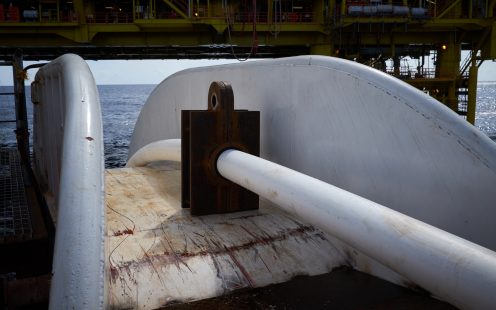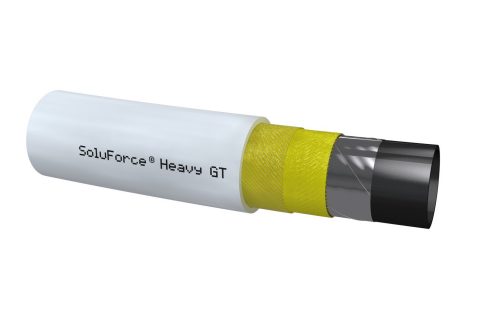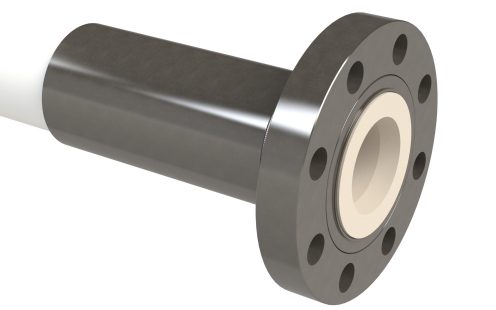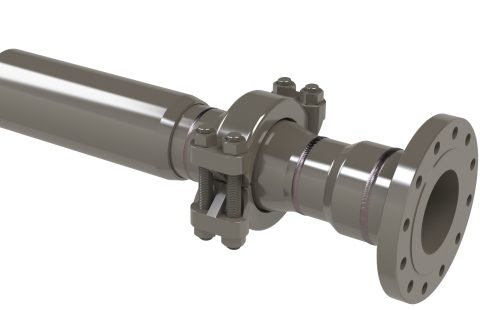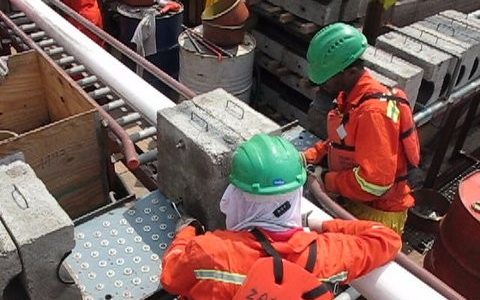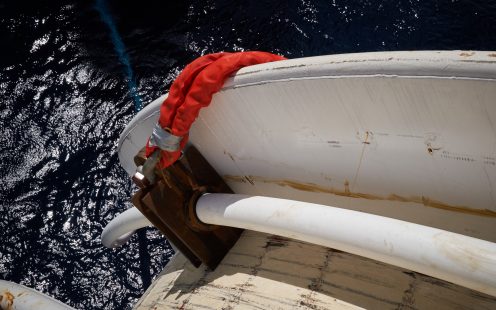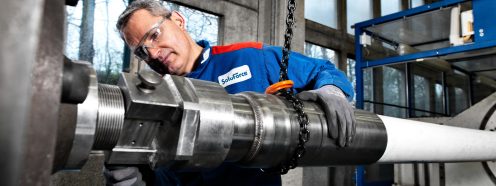Offshore
Flexible subsea pipeline & riser systems for high-pressure offshore oil & gas
When it comes to making marginal offshore oil and gas fields economically viable, SoluForce subsea pipeline solutions offer several advantages over steel and other flexible options.
Why use SoluForce flexible pipe system?
Our pipeline and offshore riser systems are light, strong, durable, and reliable — with shorter lead times– perfect for connecting low-viability wells to nearby platforms, eliminating the need for a new drilling platform. Our pipes are faster, easier, and cheaper to deploy with no welding required, plus there's no need for hot permits or specialist pipe-laying barges.
SoluForce flexible pipe system propeties
SoluForce pipeline systems are entirely corrosion resistant even in extreme sour service. Our pipes have a smooth bore, ensuring a much lower flow resistance and improved flow capacity. SoluForce pipes can be used unfilled at a maximum depth of 80 meters/260 feet, or when filled, can be used in much deeper water, where they have acted as temporary test lines at depths of 1000 meters/3280 feet.
All SoluForce flexible composite pipeline systems use metal-free fittings, couplings, and connectors. Our pipeline systems are therefore resistant to all chemicals involved in various applications, including:
- H2S
- CO2
- Strong inorganic acids like HCl and H2SO4
- Strong alkaline materials, including NaOH, KOH, and NH2 solutions
- Anti-corrosion additives
- Mineral salts
Pipe Types
SoluForce Flexible Composite Pipe (FCP, also known as Reinforced Thermoplastic Pipe or RTP) solutions are comprehensive yet economical. Especially in the offshore market where costs can rise quickly, SoluForce has proven itself as the go to solution for quick and economical deployment of long lenght pipelines. In most cases preparation can be done onshore, minimizing valuable offshore time and leading to unbeatable installation speeds. When selecting SoluForce for your project, you can opt for pipes-and-fittings only or extend this with a wide range of services and support.
Our services include installation equipment for rent or purchase and training international and local workforces to use the SoluForce system — all so you can safely speed up installation and reduce your labor needs. We can also assist with project management and help you find the right people for your project. Or any combination of the above.
Because the SoluForce system can be completely non-metallic, they are both scaling and corrosion free. All SoluForce pipe systems have a smooth bore, ensuring a much lower flow resistance and improved flow capacity. Moreover, their resistance to dynamic operations has been extensively proven and verified, making them ideal in subsea pipeline scenarios.
All SoluForce solutions comply with international standards (including API and ISO). Visit our track record page for more information on various SoluForce applications.
SoluForce Fitting Solutions
The SoluForce system includes a variaty of fitting systems catered to offshore applications. All fitting systems are extensively tested, certified and have proven themselves in (dynamic) offshore applications. With the electrofusion and single swage fitting solutions, the fluids or gasses never come into contact with the metal parts of the fitting system by using a non-metallic insert. This results in a completely corrosion and scaling-free system, no matter what fluid or gas is transported through them.
For pressures higher than 150 bar/ 2175 psi, the double swage fitting is the system of choice. All fittings can be disconnected easily to allow for easy relocation of the pipeline.
Multiple flange ratings are available. All steel parts can be produced according to your material specifications.
Speak To Our Specialists
SoluForce Offshore projects
Long life, non-metallic offshore pipe systems
SoluForce flexible subsea pipeline systems significantly reduce CAPEX and completely eliminate OPEX, making them perfect for low-viability drilling platforms.
Frequently Asked Questions
Why is corrosion such a problem in offshore oil fields?
Aside from the fact that steel corrodes when exposed to salt water, the industry is now trying to extend recovery rates from old oil fields to keep them productive for longer, which necessitates the use of water injection (among other methods). Though this technique can make marginal oil fields more productive, it also makes hydrocarbons more sour, leading to higher corrosion rates over time.
Why not use corrosion inhibitors instead of composite pipes?
For corrosion inhibiting chemicals to be effective, pumping systems need an uptime of over 90%. Not only is this rarely achievable by the majority of operators, but the process also requires a constant supply of chemicals and the heavy use of pumping systems.
Why are SoluForce subsea pipelines cheaper to install?
Before steel pipes can be laid, a pipe laying barge needs to be mobilized, which may necessitate a lengthy relocation from another region. In contrast, SoluForce pipes come in long, spoolable lengths, which makes them simple and cost-effective to lay, with a low weight that can easily be tolerated by smaller vessels. Moreover, installation can be prepared onshore, leading to daily installation rates far exceeding possibilities of steel pipelines.
What is an offshore riser?
An offshore riser system is a type of subsea pipeline that runs in a vertical orientation, and is used to carry materials to or from the seafloor to semi-submersible drilling rigs or production facilities. There are many types of riser design, from marine drilling risers to export pipelines for oil and gas production. Marine risers can either be flexible or rigid, and are often insulated for use at extreme offshore water depths.
Get In Touch
Callback

